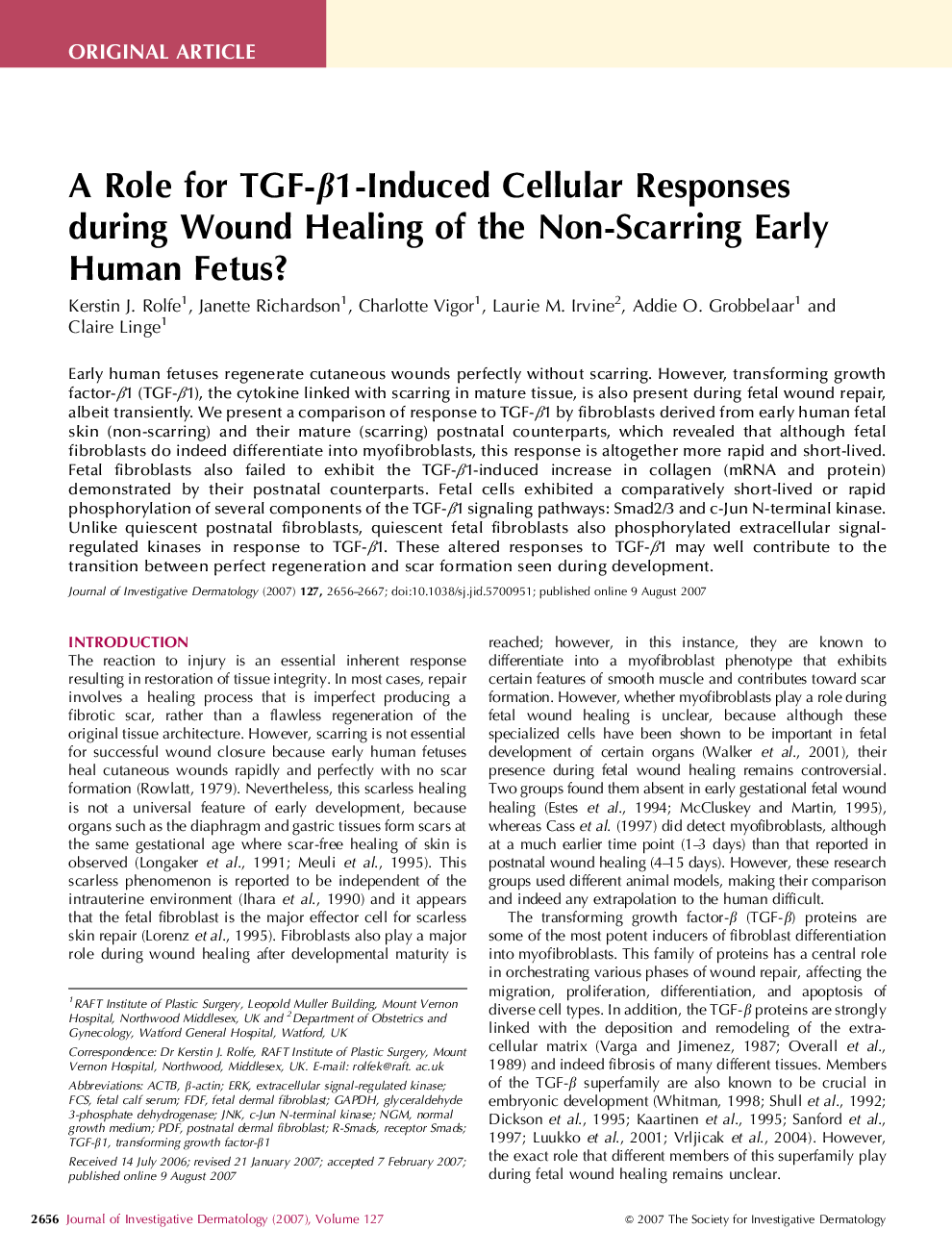| Article ID | Journal | Published Year | Pages | File Type |
|---|---|---|---|---|
| 3217349 | Journal of Investigative Dermatology | 2007 | 12 Pages |
Early human fetuses regenerate cutaneous wounds perfectly without scarring. However, transforming growth factor-β1 (TGF-β1), the cytokine linked with scarring in mature tissue, is also present during fetal wound repair, albeit transiently. We present a comparison of response to TGF-β1 by fibroblasts derived from early human fetal skin (non-scarring) and their mature (scarring) postnatal counterparts, which revealed that although fetal fibroblasts do indeed differentiate into myofibroblasts, this response is altogether more rapid and short-lived. Fetal fibroblasts also failed to exhibit the TGF-β1-induced increase in collagen (mRNA and protein) demonstrated by their postnatal counterparts. Fetal cells exhibited a comparatively short-lived or rapid phosphorylation of several components of the TGF-β1 signaling pathways: Smad2/3 and c-Jun N-terminal kinase. Unlike quiescent postnatal fibroblasts, quiescent fetal fibroblasts also phosphorylated extracellular signal-regulated kinases in response to TGF-β1. These altered responses to TGF-β1 may well contribute to the transition between perfect regeneration and scar formation seen during development.
